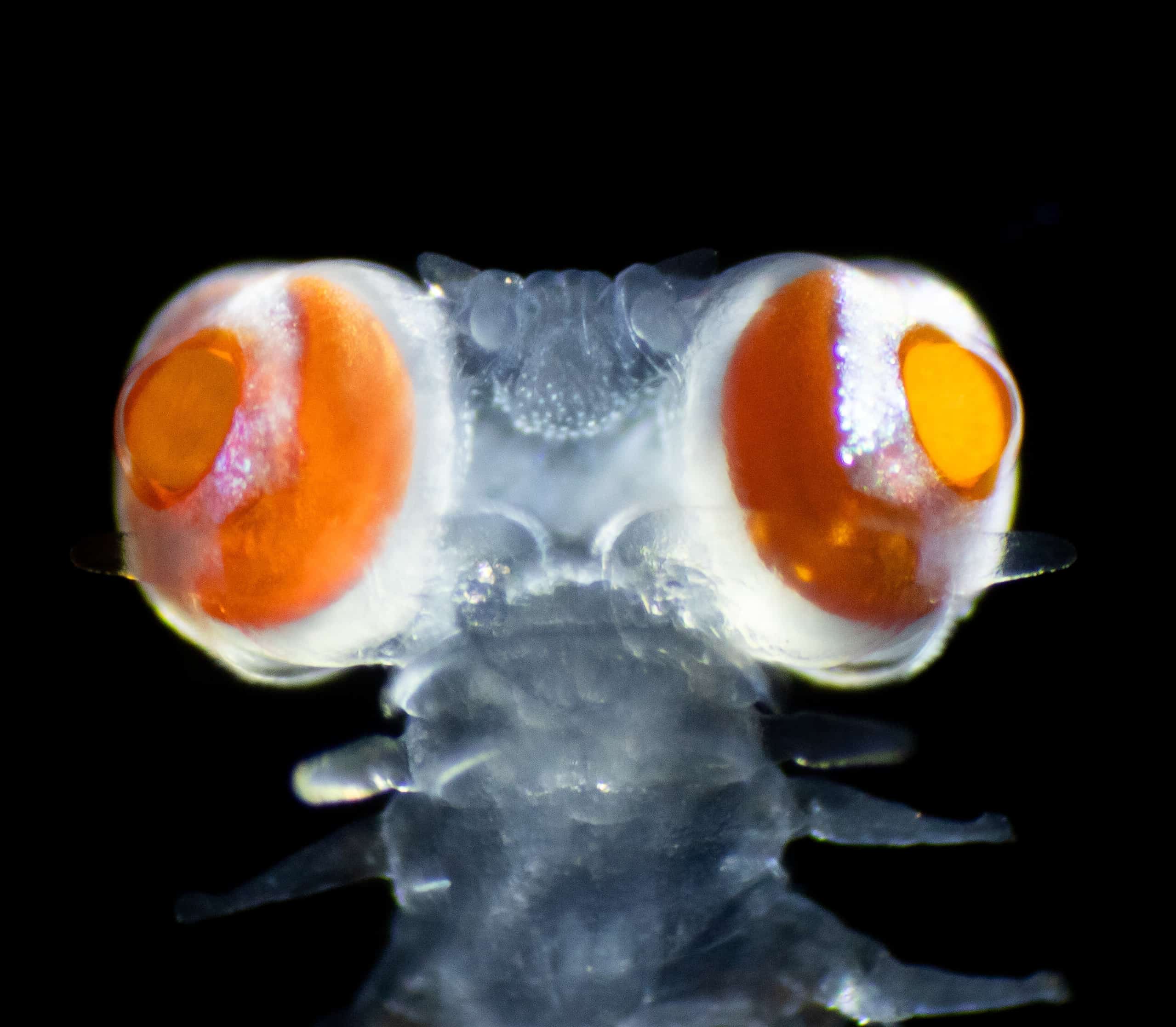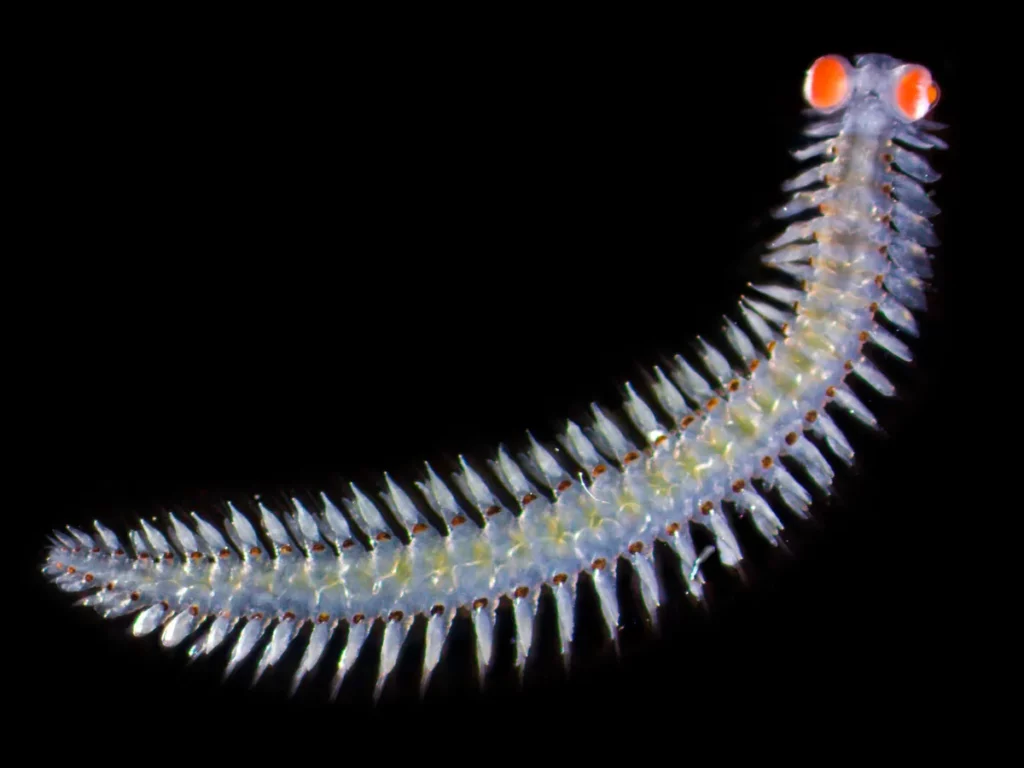
Fish aren’t particularly known for their stunning vision. Sea worms sound like they’d be even worse. But hidden beneath the deep blue waters of the Mediterranean, a tiny bristle worm is defying all expectations.
The first thing you’ll notice about the Vanadis bristle worm is its huge googly eyes which weigh twenty times more than the rest of its body. This creature put all its character points in vision — all in! If a human had eyes this big, they’d weigh dozens of kilograms.
In a new study, biologists at the University of Copenhagen and Lund University have taken a closer look at the bristle worm’s balloon-like eyes. They confirmed its eyesight is excellent, on par with mammals and cephalopods. However, they also found that the Vanadis is even more remarkable than expected. It can see ultraviolet (UV light), which is invisible to our eye, and may use it to communicate and find mates.
More than meets the eye
The Vanadis bristle worm (Vanadis formosa) can be found near the Italian island of Ponza. Individuals range from a few millimeters to several centimeters in length. This is a nocturnal creature with a peculiar appearance, like other big-eyed bristle worms in the same family known as Polychaeta. Its body is transparent except for the eyes, which need to absorb light.
Scientists from the University of Copenhagen and Lund University were intrigued by these giant red eyes. Why would a creature that only comes out to play at night need such large eyes?
“Together, we set out to unravel the mystery of why a nearly invisible, transparent worm that feeds in the dead of night has evolved to acquire enormous eyes. As such, the first aim was to answer whether large eyes endow the worm with good vision,” said co-author Michael Bok of Lund University.
To get to the bottom of things, the researchers collected specimens from three species of bristle worms living in shallow waters. They brought the specimens to the labs, where they analyzed their eyes. Although the Vanadis have a very simple and primitive nervous system, the researchers were quite surprised to find they can see very well. For instance, they can track the movements of small objects.
“It’s really interesting because an ability like this is typically reserved for us vertebrates, along with arthropods (insects, spiders, etc.) and cephalopods (octopus, squid). This is the first time that such an advanced and detailed view has been demonstrated beyond these groups. In fact, our research has shown that the worm has outstanding vision. Its eyesight is on a par with that of mice or rats despite being a relatively simple organism with a minuscule brain,” said Anders Garm from the University of Copenhagen’s Department of Biology.
So far, the researchers were able to ascertain that the bristle worm has great eyesight, but the ‘why’ lingered. So Garm and Bok took hints from evolutionary biology. These worms are inherently transparent, except for the eyes. Being nearly invisible is great for avoiding predators, but having such large eyes hampers this strategy. The cost must be outweighed by a net benefit. But how?
UV signaling

Part of the explanation lies in the worm’s ability to see UV light. The biologists think that these worms are UV bioluminescent and that they use this ability to communicate with other members of their species.
“If you use normal blue or green light as bioluminescence, you also risk attracting predators. But if, instead, the worm uses UV light, it will remain invisible to animals other than those of its own species. Therefore, our hypothesis is that they’ve developed sharp UV vision so as to have a secret language related to mating,” said Garm.
“It may also be that they are on the lookout for UV bioluminescent prey. Regardless, it makes things truly exciting as UV bioluminescence has yet to be witnessed in any other animal. So, we hope to be able to present this as the first example,” the researcher added.
Garm and Bok are now working with Danish robotics engineers to see how the Vadanadis worm’s eyes could be translated into technology.
“Together with the robotics researchers, we are working to understand how animals with brains as simple as these can process all of the information that such large eyes are likely able to collect. This suggests that there are super smart ways to process information in their nervous system. And if we can detect these mechanisms mathematically, they could be integrated into computer chips and used to control robots,” explains Garm.
The findings appeared in the journal Current Biology.


